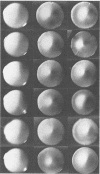Abstract
Sixteen wine fermentations were examined for the presence of killer yeasts. Killer property and sensitivity to killer action were found in isolates of Saccharomyces cerevisiae but not in isolates of Kloeckera, Candida, Hansenula, and Torulaspora spp. Several killer and killer-sensitive strains of S. cerevisiae were differentiated by colony morphology, and this property was used to monitor their growth kinetics in mixed cultures in grape juice. Killer-sensitive strains died off within 24 to 48 h during mixed-strain fermentation. Killer action was demonstrated at pH 3.0 and pH 3.5 and over the range of 15 to 25°C but depended on the proportion of killer to killer-sensitive cells at the commencement of fermentation. The dominance of killer strains in mixed-strain fermentations was reflected in the production of ethanol, acetic acid, and glycerol.
Full text
PDF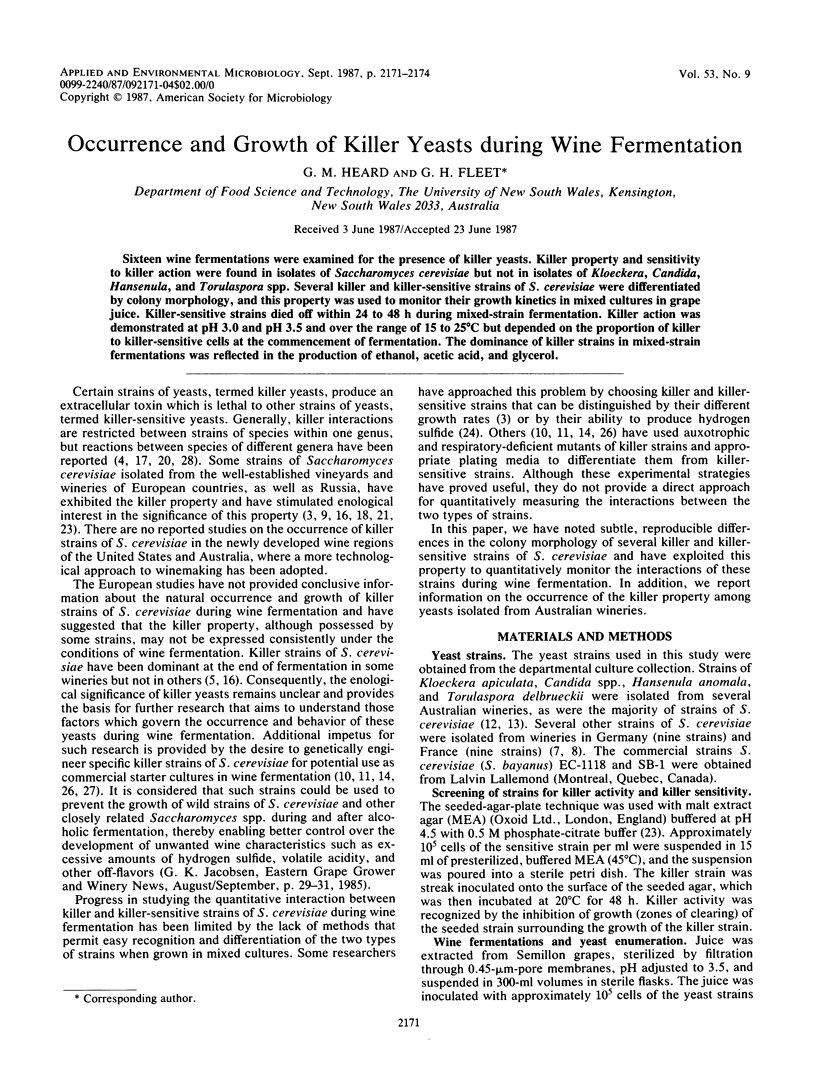
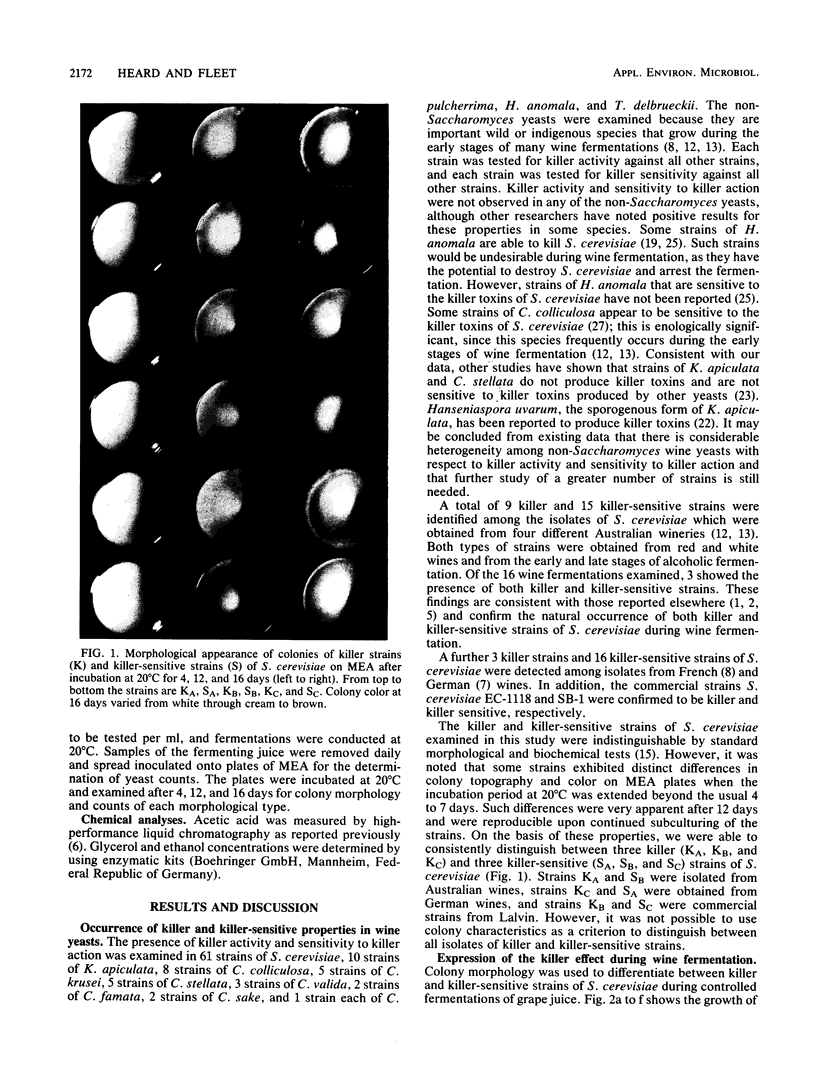
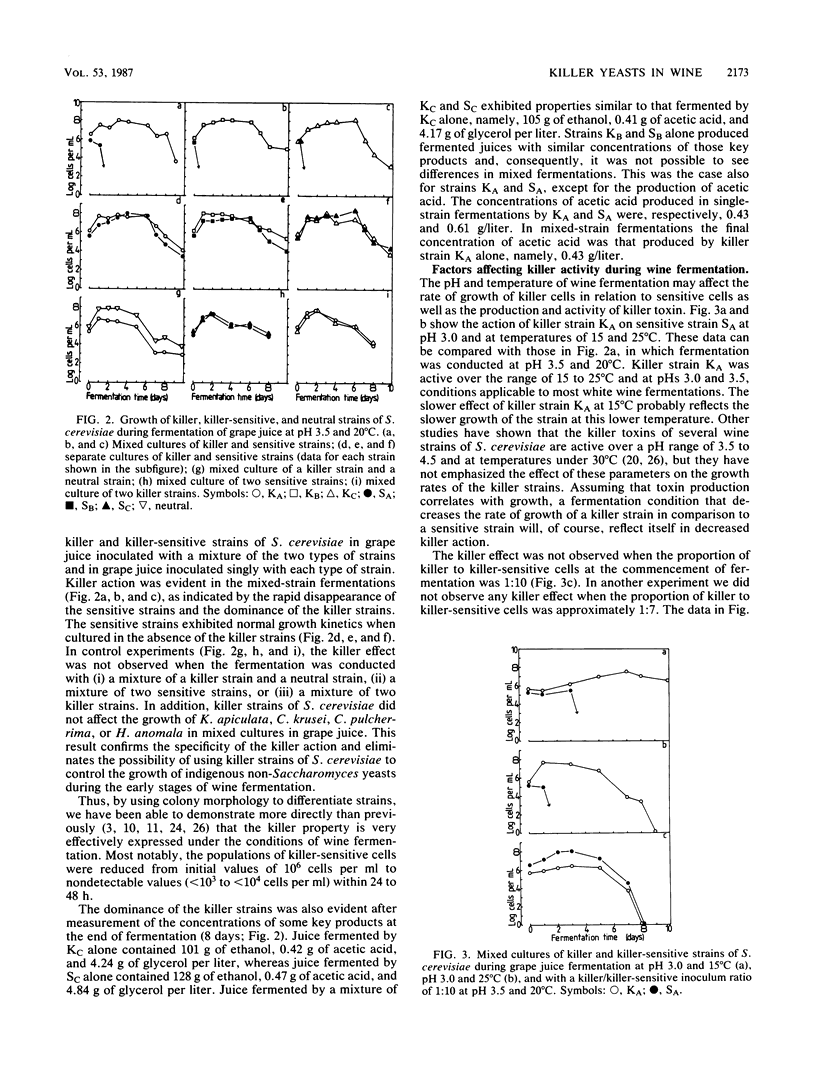
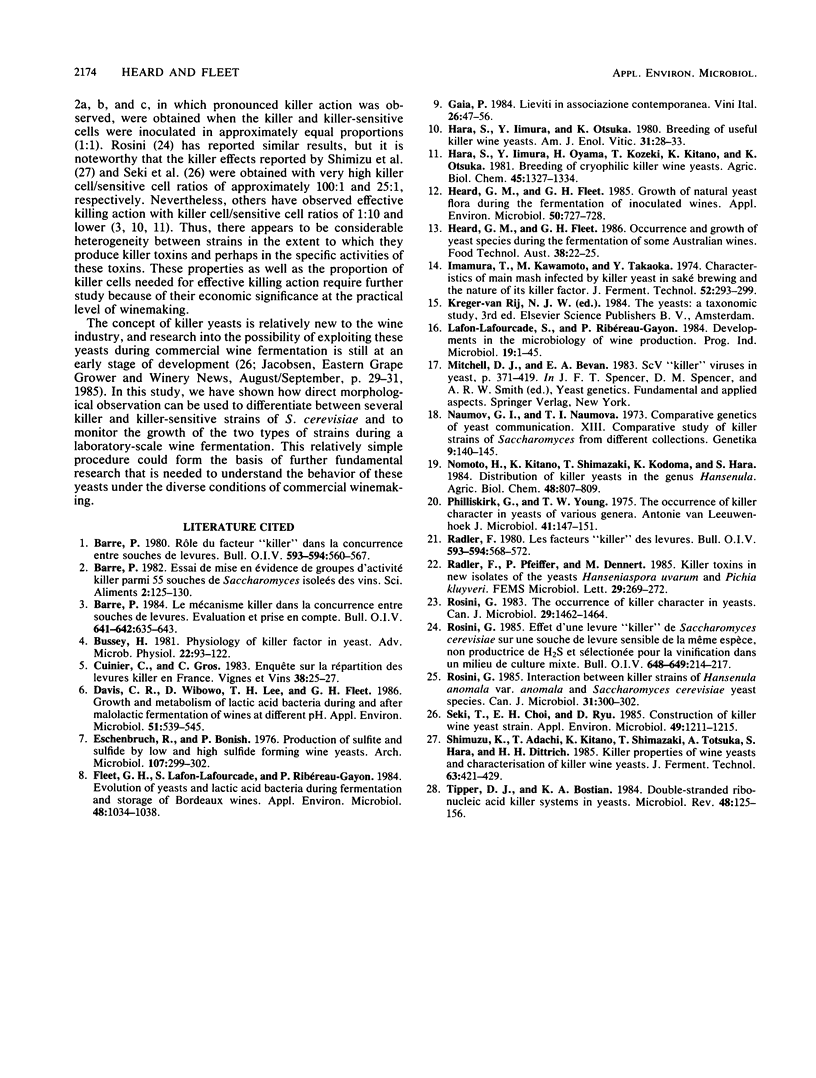
Images in this article
Selected References
These references are in PubMed. This may not be the complete list of references from this article.
- Bussey H. Physiology of killer factor in yeast. Adv Microb Physiol. 1981;22:93–122. doi: 10.1016/s0065-2911(08)60326-4. [DOI] [PubMed] [Google Scholar]
- Davis C. R., Wibowo D. J., Lee T. H., Fleet G. H. Growth and Metabolism of Lactic Acid Bacteria during and after Malolactic Fermentation of Wines at Different pH. Appl Environ Microbiol. 1986 Mar;51(3):539–545. doi: 10.1128/aem.51.3.539-545.1986. [DOI] [PMC free article] [PubMed] [Google Scholar]
- Fleet G. H., Lafon-Lafourcade S., Ribéreau-Gayon P. Evolution of yeasts and lactic Acid bacteria during fermentation and storage of bordeaux wines. Appl Environ Microbiol. 1984 Nov;48(5):1034–1038. doi: 10.1128/aem.48.5.1034-1038.1984. [DOI] [PMC free article] [PubMed] [Google Scholar]
- Heard G. M., Fleet G. H. Growth of Natural Yeast Flora during the Fermentation of Inoculated Wines. Appl Environ Microbiol. 1985 Sep;50(3):727–728. doi: 10.1128/aem.50.3.727-728.1985. [DOI] [PMC free article] [PubMed] [Google Scholar]
- Naumova G. I., Naumova T. I. Sravitel'naia genetika drozhzhei. Soobshchenie XIII. Sravitel'noe izuchenie sakharomitsetov-ubiits iz razlichnykh kollektsii. Genetika. 1973 Nov;9(11):140–145. [PubMed] [Google Scholar]
- Philliskirk G., Young T. W. The occurrence of killer character in yeasts of various genera. Antonie Van Leeuwenhoek. 1975;41(2):147–151. doi: 10.1007/BF02565046. [DOI] [PubMed] [Google Scholar]
- Rosini G. The occurrence of killer characters in yeasts. Can J Microbiol. 1983 Oct;29(10):1462–1464. doi: 10.1139/m83-224. [DOI] [PubMed] [Google Scholar]
- Seki T., Choi E. H., Ryu D. Construction of killer wine yeast strain. Appl Environ Microbiol. 1985 May;49(5):1211–1215. doi: 10.1128/aem.49.5.1211-1215.1985. [DOI] [PMC free article] [PubMed] [Google Scholar]
- Tipper D. J., Bostian K. A. Double-stranded ribonucleic acid killer systems in yeasts. Microbiol Rev. 1984 Jun;48(2):125–156. doi: 10.1128/mr.48.2.125-156.1984. [DOI] [PMC free article] [PubMed] [Google Scholar]



